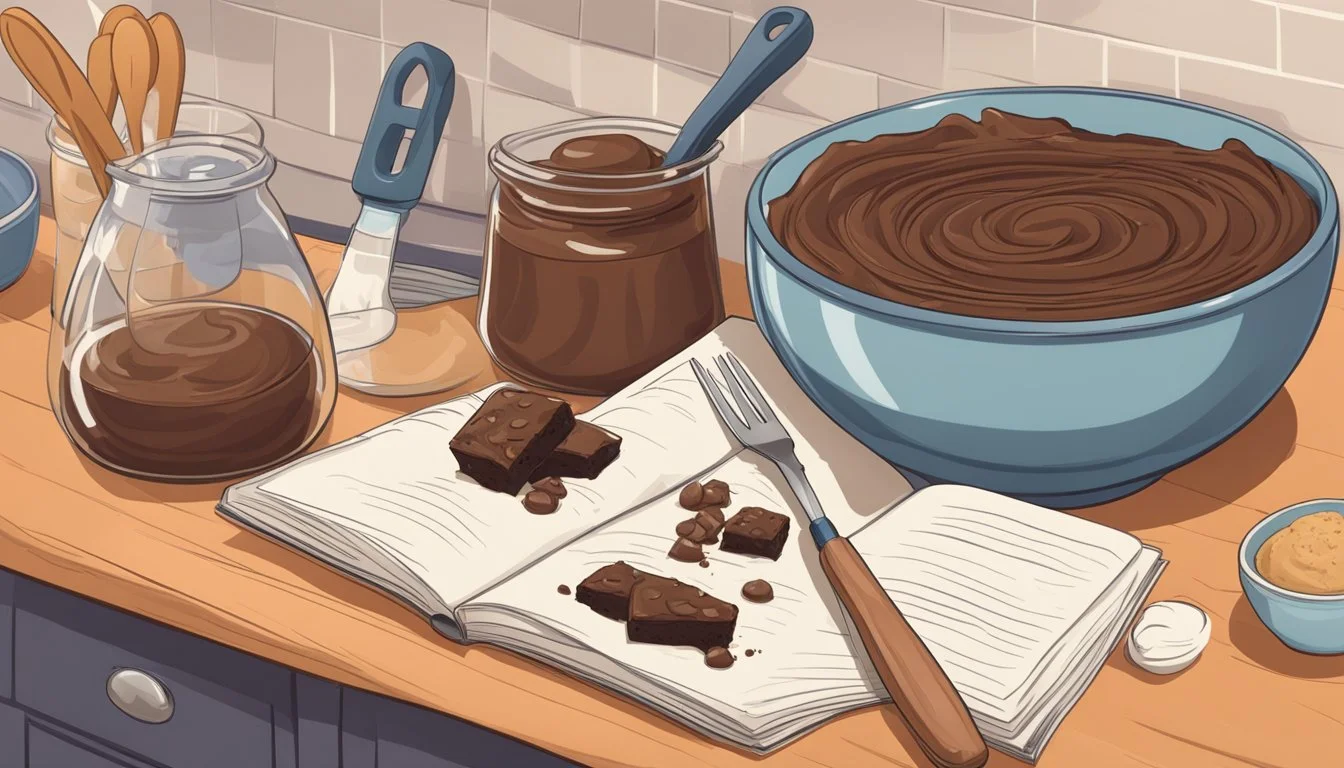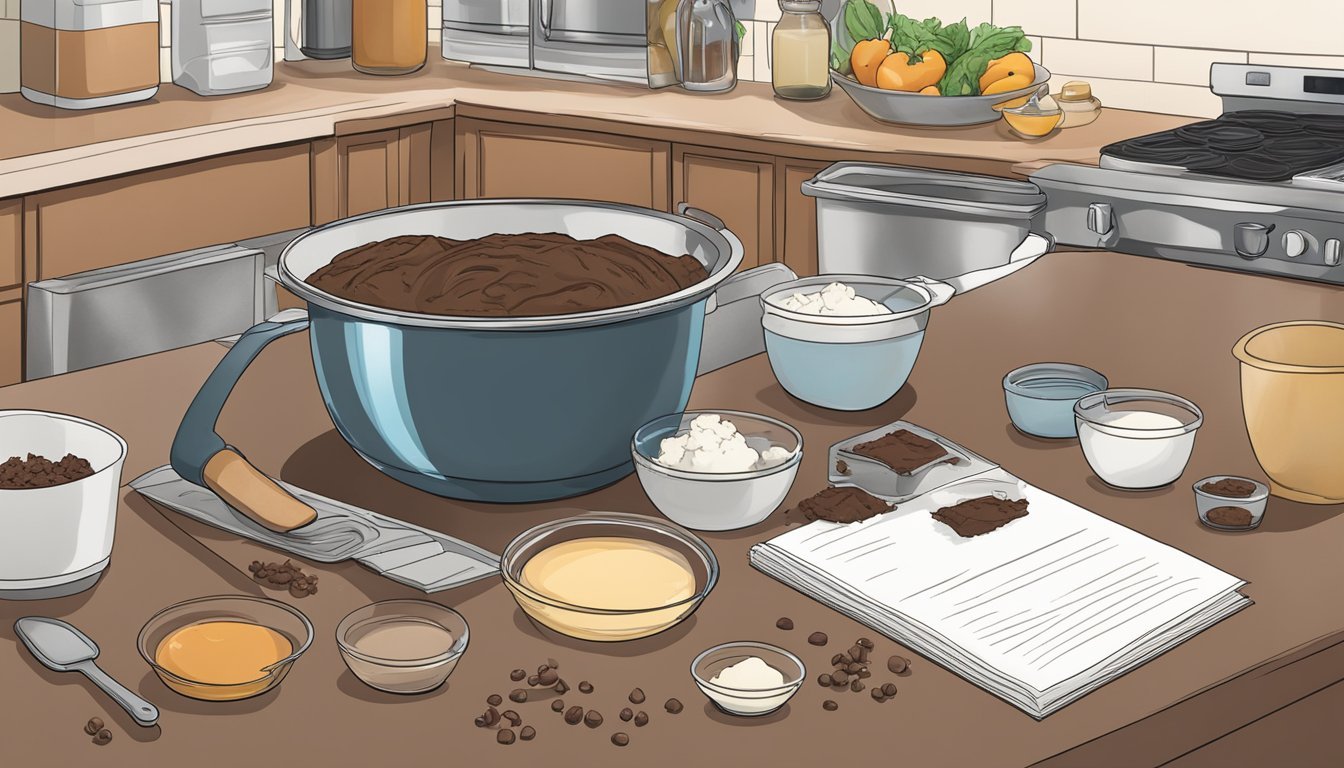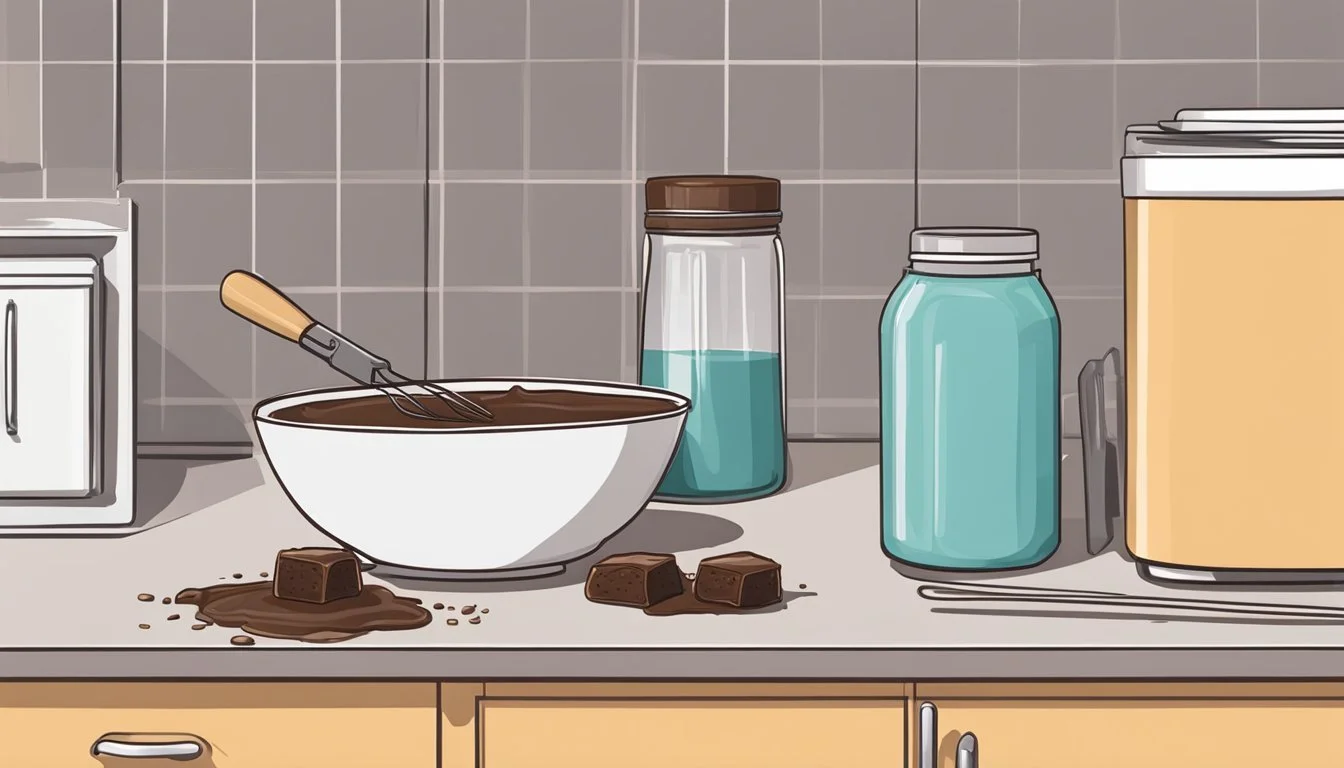Do I Have to Refrigerate Brownie Batter
Essential Storage Tips
When it comes to preparing brownies, one might ponder whether it is necessary to refrigerate the batter if it's not going to be used immediately. The answer is not straightforward, as it depends on various factors, including the time before the batter will be baked and the ingredients involved. Refrigerating brownie batter is certainly a viable option, especially if there is a need to prepare the mix ahead of time. Storing the batter in an airtight container in the refrigerator can keep it fresh for a couple of days.
However, there are considerations to bear in mind when refrigerating brownie batter. Cold batter will require a slightly longer baking time since chilling can affect the texture and rise of the brownies. It is important to ensure that the container is indeed airtight to prevent the growth of bacteria and the absorption of odors from the refrigerator. If the goal is extended storage beyond a couple of days, freezing the brownie batter is an alternative, with proper thawing in the refrigerator before usage.
Food Safety Considerations
When it comes to handling brownie batter, understanding the role of refrigeration and spotting signs of spoilage are critical for ensuring food safety.
The Importance of Refrigeration
Refrigeration is paramount in slowing bacterial growth in perishable foods, including brownie batter. Brownie batter should be stored in the refrigerator inside an airtight container. Doing so can effectively extend the batter's freshness for up to 48 hours. Batters containing perishable ingredients require strict adherence to this guidance to prevent bacterial contamination.
Refrigeration Timeframe
Typically safe for: Up to 48 hours
Storage recommendation: Airtight container
Recognizing Spoilage Signs
Brownie batter, like many food items, will exhibit signs when it's no longer safe to consume. Individuals should visually inspect for any mold growth and smell the batter for any off-odor—both clear indicators that the batter should be discarded. Additionally, if the batter has surpassed the suggested expiration date or has been stored longer than advisable, it should not be used.
Spoilage Indicators:
Mold presence
Unpleasant smell
Past expiration date
Remember: If in doubt, for safety reasons, it's wiser to err on the side of caution and discard any suspect brownie batter.
Brownie Batter Basics
When making brownie batter, the key components—ingredients and texture—are crucial for the desired outcome, be that fudgy or cake-like brownies. Each ingredient serves a specific purpose and affects the overall texture of the final product.
Ingredients Role
The primary ingredients in brownie batter typically consist of sugar, butter, eggs, flour, and cocoa powder. Here is a brief overview of their roles:
Sugar: Adds sweetness and contributes to the moist, fudgy texture.
Butter: Provides flavor, moisture, and aids in the tender crumb.
Eggs: Act as a binding agent and help to create a rich texture.
Flour: Gives structure to the brownies; too much can lead to a cakey texture.
Cocoa Powder: Imparts the chocolate flavor. The type of cocoa can affect the intensity of the chocolate taste.
Brownie recipes may also include other ingredients like vanilla extract to enhance flavor, baking powder for rise, or chocolate chips for added chocolatey bursts. The ratio and quality of ingredients directly influence the flavor and texture of the brownies.
Understanding Texture
Texture is a defining feature of brownies: some prefer theirs fudgy, while others might enjoy a cake-like consistency. The texture is greatly influenced by the proportions of dry to wet ingredients, as well as the mixing method.
Fudgy Brownies: Achieved with a higher fat-to-flour ratio. They often have less flour and more butter and chocolate, resulting in a denser batter.
Cake-like Brownies: Have a greater amount of flour and typically include a leavening agent like baking powder to create a lighter texture.
Mixing the batter to the right consistency is imperative; over-mixing can incorporate too much air, leading to a cakey texture, while under-mixing might leave pockets of dry ingredients. Each ingredient must be combined thoroughly to ensure even distribution for a consistent texture throughout the brownies.
Proper Storage Techniques
Proper storage of brownie batter is crucial in maintaining its quality and freshness. The following techniques can help ensure that brownie batter is kept in the best condition, whether it's being stored for a short period or for future use.
Refrigeration vs. Room Temperature
Refrigeration is recommended when storing brownie batter for a short period, typically not exceeding 4 days. Refrigerated brownie batter should be kept in the fridge in an airtight container, as this will protect it from picking up odors from other foods. It's important to note that batters stored in the fridge may require an additional few minutes of baking time once they are taken out to bake.
Room temperature is not advised for storing brownie batter as the ingredients, especially dairy and eggs, are perishable and can lead to bacterial growth if left out for more than a few hours.
Freezer Storage Tactics
For long-term storage, freezing brownie batter is an excellent strategy. Using an airtight container or a plastic freezer bag such as a Ziploc bag can preserve the batter for up to 3 months. To freeze:
Pour the batter into the storage container of choice.
If using a bag, remove as much air as possible before sealing to prevent freezer burn.
Label the container with the date of freezing.
When ready to bake, thawing the batter in the refrigerator before use is highly recommended.
Utilizing Airtight Containers
Storing brownie batter in airtight containers is critical regardless of whether the batter is being refrigerated or frozen. These containers prevent moisture from entering and avoid any odor transfer from other items stored alongside. For best results:
Ensure the lid fits snugly.
If an airtight container is not available, wrapping the top in aluminum foil or plastic wrap could serve as a temporary alternative.
A layer of parchment paper can be used to cover the surface of the batter before sealing the container to further keep out air and moisture.
Impacts on Brownie Quality
When it comes to brownie batter, refrigeration can affect both the texture and flavor of the final product. The decision to chill the batter should be informed by the desired outcome for these key qualities.
Moisture and Density Management
Refrigeration can impact the moisture content of brownie batter, which in turn affects the density and texture of the brownies. Brownie enthusiasts who favor a moist and fudgy texture might find that chilling the batter prior to baking helps to achieve this result. The cold environment slows down the movement of molecules within the batter, ensuring that it retains more moisture during the baking process. However, chilled batter also requires a longer baking time, which can lead to harder edges if not monitored carefully.
Ideal refrigeration time: Up to 2 days
Container type: Airtight container to prevent moisture loss
Effect of Temperature on Flavor
The temperature at which brownie batter is stored before baking can subtly influence the flavor of the brownies. Some ingredients, such as cocoa powder, are known to develop a richer and more robust flavor profile when given time to rest. Refrigerating the batter may enhance the complex flavors of chocolate, while also intensifying the overall sweetness.
Flavor considerations:
Cocoa flavor: Enhanced by refrigeration
Sweetness: May become more pronounced after chilling
The careful consideration of temperature and its effects can greatly enhance the quality of the brownies, ensuring a perfect balance between soft, moist texture and rich, deep flavor.
The Baking Process
When preparing brownies, the step from turning batter into baked goods is critical. This transformation is guided by a precise baking process that dictates texture and flavor.
From Batter to Baked Goods
Once the brownie batter is properly mixed according to the recipe, it should be transferred to a pre-greased baking dish. The size of the baking dish can affect the thickness of the brownies, so following the recipe’s recommendation is important.
Before placing the batter into the oven, it’s essential to preheat the oven to the temperature specified by the recipe. Consistent oven temperature is crucial for even baking. A toothpick can be used as a tester; for fudgy brownies, it should come out with streaks of batter and for cake-like brownies, with a few moist crumbs.
Here are a few tips to keep in mind during the baking process:
Preheating: Always preheat the oven to the correct temperature before baking.
Baking Dish: Use the correct size as suggested in the recipe.
Baking Time: Follow the recipe's suggested baking time but check for doneness with a toothpick test.
Toothpick Test: Insert a toothpick into the center of the brownies. It's ready if there are a few moist crumbs.
It's important to note that brownies continue to cook even after being removed from the oven, due to residual heat. Consequently, it’s recommended to take them out just before they're done to avoid overbaking.
Handling Leftovers
When dealing with leftover brownie batter, one must ensure that it is stored correctly to maintain freshness and prevent food safety issues. The subsequent sections outline specific methods for cutting and storing already-baked brownies and the correct practices for reheating them.
How to Cut and Store Brownies
Once brownies have completed baking and have cooled, they should be cut into portions. A plastic knife or a serrated blade can minimize crumbling. For storage:
Cooling: Allow the brownies to cool completely at room temperature. This prevents condensation and mold growth.
Cutting: Cut the brownies into desired serving sizes using the appropriate knife.
Airtight Container: Transfer the cut brownies to an airtight container. This keeps them fresh and prevents them from drying out.
Refrigeration: If one intends to keep the brownies for more than three days, refrigeration can extend their freshness up to a week.
Freezing: For longer storage, brownies can be frozen. Wrap individual portions in plastic wrap, and then place them in an airtight container or freezer bag. They can last for 1-2 months.
Methods for Reheating
To enjoy the leftover brownies as if they were fresh from the oven, proper reheating is crucial. One should take care not to overheat and dry out the brownies:
Microwave: Place a brownie on a microwave-safe plate and heat it for about 10-15 seconds. Microwaving in short bursts allows one to check the texture and warmth.
Oven: Preheat the oven to 350 degrees Fahrenheit. Place the brownies on a baking sheet and warm them for about 10 minutes. This method is useful for heating multiple servings evenly.
Long-Term Preservation
For individuals looking to keep brownie batter for more than a few days, freezing is the recommended method. This process can extend the batter's life significantly, preserving its freshness for future use.
Freezing and Defrosting Instructions
When one decides to freeze brownie batter, it is crucial to use an airtight container to prevent freezer burn and flavor loss. Here are specific instructions for effective freezing and defrosting:
Preparation: Portion the batter into the desired amounts. This step ensures that only the necessary batter is defrosted, reducing wastage.
Packaging: Spoon the batter into airtight freezer bags or containers. Squeeze out excess air to prevent freezer burn.
Labeling: Label the container with the date of freezing. Typically, frozen brownie batter can retain its quality for 1-2 months.
Freezing: Place the container in the freezer, keeping it flat to save space and maintain shape.
For defrosting, the brownie batter should be transferred to the refrigerator for several hours or overnight. This allows for a slow and steady thaw, which maintains the batter's consistency and prevents any bacterial growth that might occur from counter-top thawing. Once defrosted, the batter may be slightly thicker, and some stirring might be required to achieve the original texture before use.
Enhancing Brownie Varieties
Creating a variety of brownies can be easily achieved by incorporating various ingredients that complement the chocolate base. The right mix of add-ins and toppings can transform a simple brownie into an exquisite dessert experience.
Exploring Add-Ins and Toppings
When experimenting with add-ins and toppings for brownies, the options are extensive:
Nuts: Walnuts, pecans, and almonds add a delightful crunch. Toast them beforehand to enhance their flavor.
Type of Nut Suggested Preparation Walnuts Roughly chopped Pecans Toasted and chopped Almonds Slivered or sliced
Chocolate Chips: A variety of chocolate chips can add contrasting textures and tastes. Consider mixing different types like milk, dark, or white chocolate chips.
Chocolate Chip Type Characteristic Milk Creamy and sweet Dark Rich and less sweet White Sweet and milky
Dried Fruit: Think beyond raisins. Dried cherries or apricots can offer a tart counterbalance to the chocolate.
Fresh Fruit: Fresh raspberries or strawberries can add a juicy and tangy twist to the brownie when added as a topping.
Melted Chocolate: Drizzling melted chocolate over the top can create a decadent and visually appealing finish.
Cream Cheese: Swirl cream cheese into the batter for a creamy cheesecake-like variation. A Cream Cheese Brownie recipe usually involves dollops of cream cheese mixture that are then swirled into the batter before baking.
When experimenting with these mix-ins, one should consider the balance of textures and flavors to ensure that the brownie remains the star while the added elements complement rather than overpower it. It's also important to evenly distribute the add-ins to ensure each bite offers a consistent tasteful experience.
Special Considerations
When considering whether to refrigerate brownie batter, one must take into account not only the preservation of the batter but also how specific ingredients and brownie forms may change under refrigeration.
Allergies and Dietary Restrictions
For homemade brownies or boxed brownie mix that cater to specific allergies or dietary restrictions, the ingredients can influence the batter's stability. Crafted with alternatives like almond flour, flax eggs, or lactose-free milk, these recipes may respond differently to refrigeration.
Gluten-free: Gluten-free brownie mixes might have a modified texture when chilled, possibly becoming more dense or fudgy.
Vegan: Vegan recipes often include flax or chia eggs which can gel and thicken more in the fridge, affecting the final baked result.
Nut allergies: Nut-based flours can turn rancid quicker, so refrigeration is key to maintaining freshness.
Alternative Brownie Forms
The desired outcome, whether dense, fudgy brownies or cake-like brownies, can be impacted by refrigeration prior to baking.
Dense, Fudgy Brownies:
Refrigeration can intensify the fudgy quality due to the solidification of fats.
The cold temperature slows down the activity of leavening agents, resulting in a denser texture.
Cake-Like Brownies:
This form requires more aeration; a colder batter may not rise as much, leading to less cake-like structures.
Refrigerating cake-like brownie batter is less common as it might compromise the desired fluffy texture.
When incorporating the batter into different dessert forms or recipes, consideration should be given to how the act of refrigeration might alter the structural integrity of the final product.
Troubleshooting Common Issues
In this section, readers will learn how to prevent and rectify the most common issues faced when storing brownie batter. Specifically, it addresses how to handle freezer burn and separation or crumbling of the batter.
Preventing and Addressing Freezer Burn
Freezer burn occurs when air comes into contact with food surfaces in the freezer, leading to dehydration and oxidation that compromises quality. To avert freezer burn, one should:
Wrap brownie batter tightly: Use a freezer bag, pressing out as much air as possible before sealing. Spread the batter flat within the bag to minimize the surface area exposed to air.
Label with dates: Clearly mark the storage date on the container or bag, using the batter within three months to ensure maximum freshness and flavor.
If the brownie batter shows signs of freezer burn, such as ice crystals or a parched surface, it’s typically still safe to use, though the taste and texture may be slightly affected.
Dealing with Separation and Crumbling
Upon thawing, brownie batter may separate or become crumbly due to variations in ingredient consistency. To address this, one can:
Gently stir the batter: To recombine separated ingredients, stir the batter softly until it achieves a uniform consistency.
Add moisture if needed: If the batter is too crumbly, a tablespoon of milk can introduce additional moisture. Add slowly and mix to achieve the desired soft and moist batter consistency.
It's crucial to manage these issues promptly, as they can affect the texture and integrity of the final brownie. Each step ensures that when the batter is baked, the brownies remain soft, moist, and uniform.
FAQs and Expert Tips
In this section, they'll explore common queries regarding the refrigeration of brownie batter and gain insights from professional baking experiences. Proper storage can significantly impact the shelf life and quality of the brownies one aims to enjoy.
Frequently Asked Questions
How long do brownies last?: Uncut brownies can last up to one week when refrigerated. If unrefrigerated, they should be consumed within 3-4 days to maintain freshness and to prevent spoilage.
What is the shelf life of brownie batter in the fridge?: Brownie batter can be safely stored in the refrigerator for up to two days in an airtight container.
Can cooked brownies be refrigerated with frosting?: Yes, cooked brownies with frosting can be refrigerated. It is advisable to allow the frosting to set and the brownies to cool completely before refrigerating.
Professional Baking Insights
On Cooling and Texture: It's critical for brownies to cool entirely before cutting, as this prevents crumbling and ensures a firm texture. Cooling is especially important for brownies with frosting to maintain consistency.
Balancing Flavors: A brownie's flavor can change depending on storage. Refrigeration can enhance certain flavors, making them taste more pronounced, whether they're salty or sweet. However, one must ensure brownies are brought to room temperature before serving to ensure the ideal flavor profile and texture.











